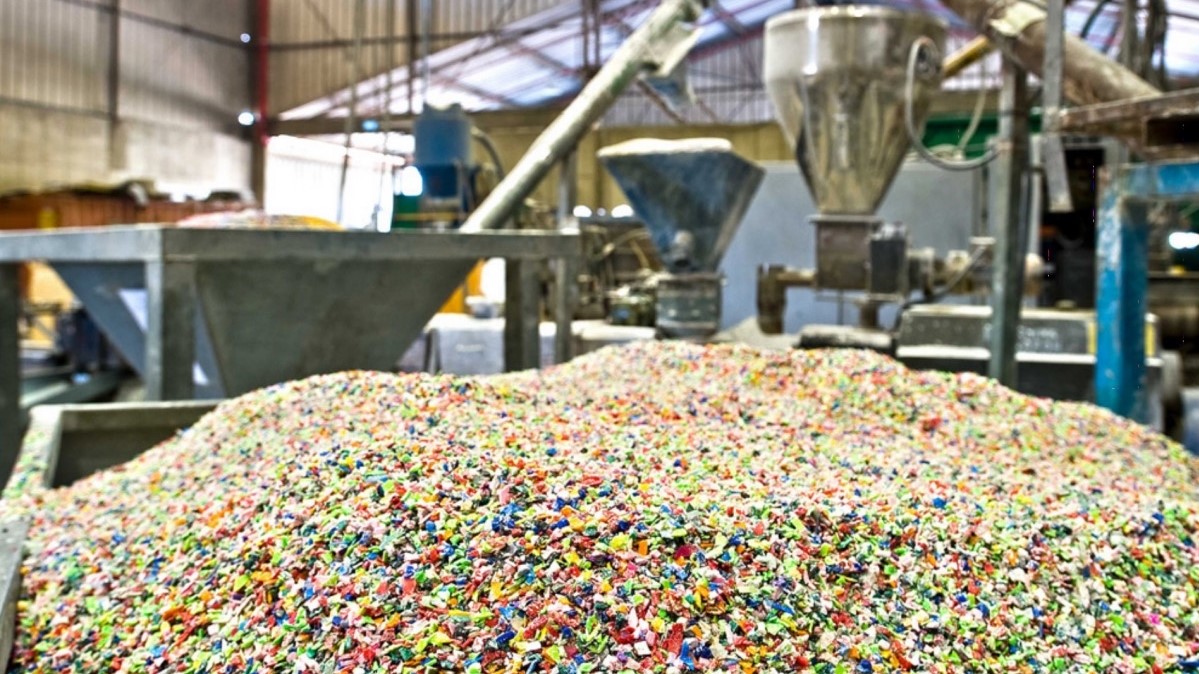
A plant capable of turning waste plastic into hydrogen is to be built at Rothesay Dock on the north bank of the river Clyde in Scotland.
The new facility will be the second waste plastic to hydrogen facility using technology from Powerhouse Energy Group, after plans for a similar facility at Peel NRE’s Protos site in Cheshire were approved in 2019.
The company’s process provides an alternative to putting unrecyclable plastic into landfill. It can process any mix of polymers and the feedstock can be wet, as well as containing organics.
The plastics are broken up into similar-sized pieces before being fed into a thermal conversion chamber. The plastic is heated to very high temperatures. It then melts and vaporises into a mix of gases containing methane, hydrogen and carbon monoxide. The conversation chamber operates in the absence of oxygen so there is no burning.
The resulting gas is similar in calorific value to natural gas and a small proportion of it is then used to provide the heat required to run the thermal conversion chamber, making the process self-sustaining, according to Powerhouse Energy Group.
Tim Yeo, executive chairman of Powerhouse Energy Group, said: “We are delighted Powerhouse technology is to be deployed in Scotland, helping the region improve air quality and provide a solution to end-of-life plastic. This new facility will play an important role in supporting the objective of both Holyrood and Westminster to make hydrogen a key element of Scotland’s decarbonisation strategy.
“We welcome plans to co-locate a re-fuelling station at the site which will help increase uptake of hydrogen fuel in the region and add to Scotland’s growing hydrogen economy. All eyes are on Scotland ahead of the important COP26 meeting in Glasgow later this year, so we are delighted our pioneering, clean energy technology will help put Scotland on the path to net zero”.
Richard Barker, director at Peel NRE, part of Peel L&P, said: “Plastic is often demonised, but we have seen how essential it is in industries like healthcare. We do need to recycle as much of this plastic as possible and also get as much value from unrecyclable, end-of-life plastic. This facility will convert plastic into hydrogen a clean fuel that produces no emissions at the point of use, helping to improve local air quality. By co-locating a refuelling station, we can help to kick start the infrastructure needed to support the rollout of hydrogen vehicles which will be an important part of our journey to net zero.”
Decisions about the financing of this second plant will be made after land use planning consent has been obtained and closer to the start date for construction.
Comments
Comments are closed.











Great that hydrogen will be produced from waste plastics, but what happens to the other by-product gases of methane and carbon monoxide?
I assume this is what is termed blue hydrogen … I hope approval is linked to requirement for CO2 capture, otherwise surely just converting one climate challenge (plastic waste) into another (CO2) isn’t progress ?